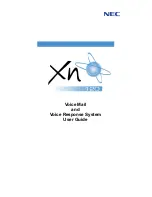
KT1 AND KT4 SERIES TELEPHONES
INTRODUCTION
This handbook covers the range of TMC KT
1
and
KT4 Series Telephones which are offered to suit
various requirements, styling and colour preferences
of customers throughout the world. The range is
compatible with British Telecom systems. Each
instrument is batteryless, being powered by supplies
received from the telephone exchange lines. The
pushbutton action keys enable positive, quick and
easy switching, without switch contact bounce.
2 The standard instrument may include various
optional facilities to suit site requirements. These are:
1
) Message waiting circuit - a facility useful for
example, in an hotel installation, whereby an
external lamp, powered from the lines, is
switched on to indicate that a call can be
obtained from the reception desk.
2) Bell capacitor circuit - a spike protection and
antHinkle circuit, fitted when the alternative
circuit, normally fitted in a wall socket, is not
available on site. The circuit prevents other
telephones on the same line from ringing
when dialling from one of the telephones.
3) 400 x 400 ohm feeding bridge circuit
additional components fitted to suit some
overseas installations.
4) Tone caller ICs - alternative components
fitted
to
be
compatible
with
Texas
Instruments or Ferranti tone caller ICs.
Normal versions use special TMC (
1
503) I Cs.
5) Locking
version
option
additional
component, used to disable signals, but allow
speech. This circuit is used to prevent
outgoing calls, but allows incoming calls.
6)
Additional component spaces - provided for
possible future use.
7) Timed break recall - additional components
as required, to introduce given time break in
line (e.g. 70ms, 125ms or 280ms) for timed
break recalls.
3 The special TMC integrated circuits are designed
to meet the requirements of a new generation of
telephone sets, in line with the latest developments
in telecommunications technology.
MECHANICAL CONSTRUCTION
4 The TMC KT 1 Series telephone comprises three
major assemblies, the handset, the base instrument,
4
and when mounted on a wall - the wall bracket
assembly. The KT 4 Series is a desk standing model
only, and comprises the handset and base instrument
assemblies.
5 The handset is connected to the base instrument
by means of the 250mm handcord, which may be
extended to
1
. 7 metres when used. The KT 1
handset may be dismantled by removing the screw at
the earpiece end and by releasing the mid-section
retaining clips (with a flat-bladed tool such as a nail
file or large screwdriver), to separate the two
mouldings.
The
KT 4
handset
mouldings
are
separated in the same way, except that there is no
retaining screw at the earpiece end. A cut-out is
provided instead, to enable a large screwdriver to
release the moulding clips at this end.
6
The base instrument contains the following major
sub-assemblies:
1)
Moulded base
containing the rubber
mounted feet, telephone tone caller capsule
and adjustable volume control.
2) Printed circuit board.
3) Rubber keypad mat.
4) Keyboard (individual pushbutton keys 0 to
9,
*,
#, and R (Recall) with push button guide
housing.
5) Upper moulded case.
7 To dismantle the base instrument:
1) Lift off the handset. Turn the instrument
upside down.
2) Remove the base screw and lift off the
moulded plastic base.
3) Press back in turn, each of the plastic
retaining clips and carefully free the PCB.
4) Lift out the rubber mat.
5) Hold the pushbutton guide housing in the
instrument and turn the instrument upright.
Lift off the upper case, leaving the keys in the
pushbutton guide housing assembly.
8 The unit is reassembled in the reverse order. Care
should be taken to ensure that the keys are replaced
in the correct positions, if they have been previously
disturbed.
3513 300 05070







































